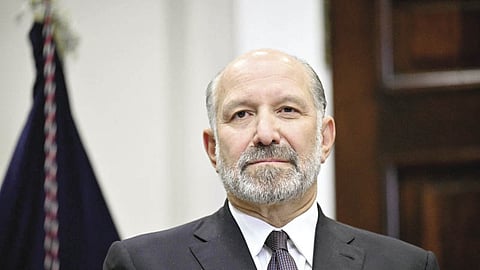India-US trade talks progress as India offers tariff reductions
After the successful conclusion of the India-UK FTA, the next big announcement that India is avidly waiting to make would be a bilateral trade agreement with the US, which also happens to be its largest trading partner. However, experts warn that this is likely to be a mini trade deal and not a full-fledged free trade agreement.
Negotiations for the trade deal are ongoing and the US President Donald Trump has said that one of the reasons India and Pakistan ended the conflict was that he had threatened them to stop, or else there would be no trade. Sources suggest that an Indian team of officials, led by chief negotiator Rajesh Agrawal from the Ministry of Commerce, is likely to go to the US later this month to take the negotiations further. Chances are that Commerce Minister Piyush Goyal will also go for the negotiations later this month.
The US is India’s largest trading partner, with bilateral trade totalling some $129 billion in 2024. The trade balance is in favour of India, which runs a $45.7 billion surplus with the US.
Meanwhile, the US has signed a trade deal with the UK within a span of a few weeks. Also, the US has achieved a ‘total reset’ in relations with China after both countries agreed to reduce tariffs on each other’s goods for 90 days.
India has reportedly offered to slash its tariff gap with the US to less than 4 per cent from nearly 13 per cent to escape the tariff hikes imposed by the US, which means that India is willing to reduce its tariffs to the US by nearly 9 per cent to clinch a beneficial trade agreement.
The US-UK trade deal announced on 8 May was the Trump administration’s first ‘breakthrough deal’ with Britain. It lowers average British tariffs on US goods but keeps in place the 10 per cent base tariff imposed by US on British goods. This is likely to set a template for US’s dealing with other trading partners.
People understand if you want your reciprocal tariff low, you have to attack the trade deficit, open your market and if you want to be really smart and thoughtful, then let’s talk about sectoral tariffs
Howard Lutnick, US Commerce Secretary
In April, President Trump had announced a 90-day pause on his long-planned reciprocal tariffs on global trading partners, including a 26 per cent tariff on India, while his administration negotiates trade deals. However, a 10 per cent base tariff continues to apply to India and many other nations during the pause.
Some reports suggest that India has proposed zero tariffs on imports of steel, auto components and pharmaceuticals from the US on a reciprocal basis, up to a certain quantity. This signals a major shift in India’s approach, as it has relied on hefty import duties on goods ranging from agricultural produce to automobile parts, footwear, jewellery and information technology products to safeguard its domestic industry.
After the UK, India and Japan are the next two nations in line to finalise a deal. Whether it would be India before Japan or the vice-versa, only time can tell.
The UK example
The US Commerce Secretary Howard Lutnick has recently said the just concluded US-UK trade deal will act as a blueprint for the upcoming trade deals. “People understand if you want your reciprocal tariff low, you have to attack the trade deficit, open your market and if you want to be really smart and thoughtful, then let’s talk about sectoral tariffs,” Lutnick remarked. “So, open your market big, we may come up with the smartest answer like we did with the UK”. He gave the example of the UK wanting to sell Rolls Royce engines to Boeing and in return agreeing to buy $10 billion worth of Boeing planes from the US as part of the deal.
According to Lutnick, the US would like to do one trade deal in Asia to show the template for the rest of the countries in the region. Through the US-UK trade deal, Washington has signalled that the 10 per cent baseline tariffs will remain for all countries even after the bilateral trade arrangement.
Trump is taking credit for facilitating the end of the military conflict between India and Pakistan. He has also said that he warned both countries that if they didn’t stop the military attacks, he would stop trade. Now that the conflict has been paused, there is optimism that trade negotiations will resume and a deal will be sealed soon.

